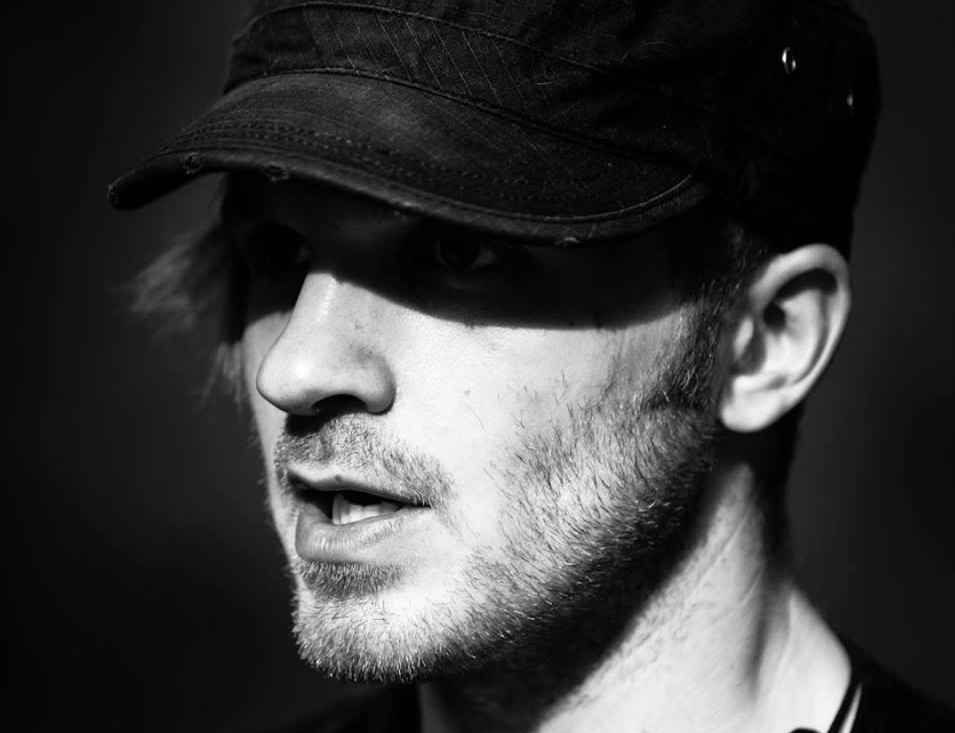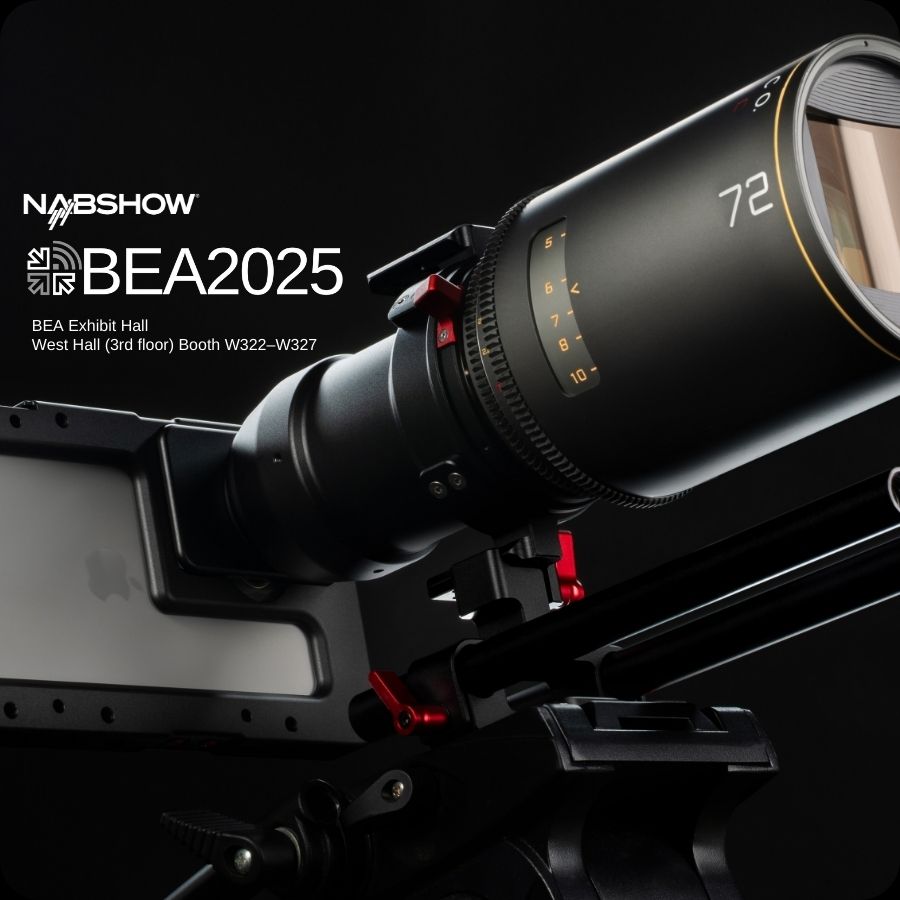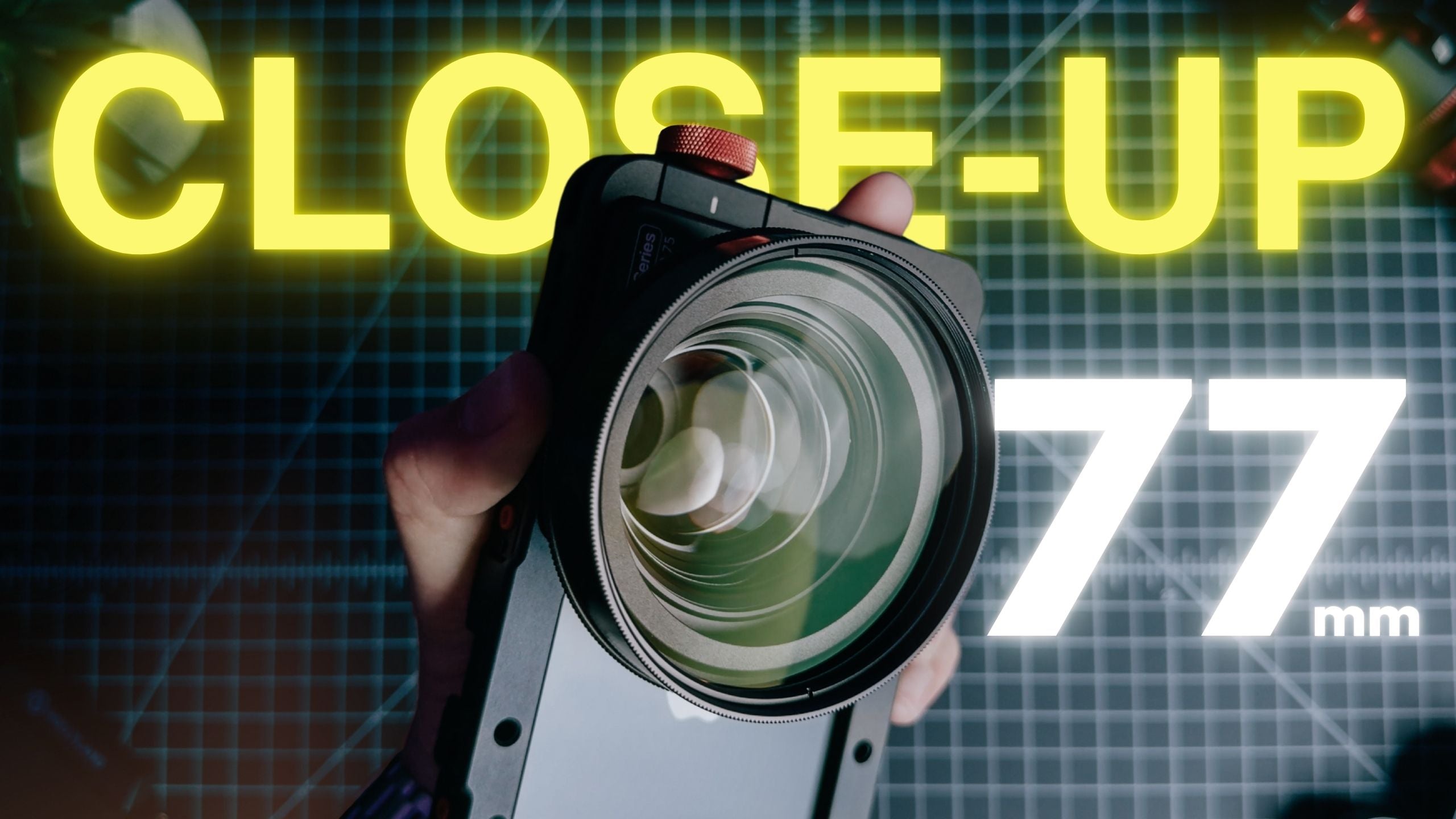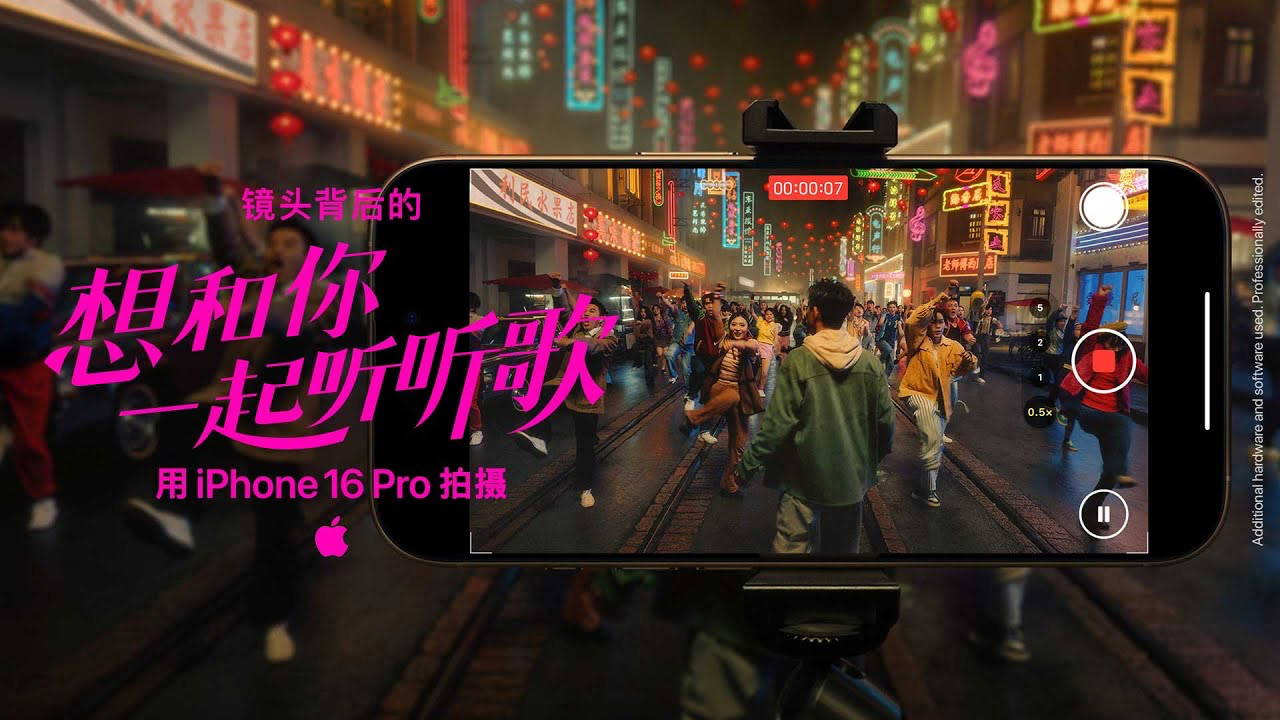“Whether it’s 4K or 1080P, a story is a story. So just go out there and tell a story, you have no excuse.” – Tristan Pope
---
If there ever was a person that could do it all, it's Tristan Pope. You can ask ten different people about him and get ten different answers - all related to art in some way. He's an Emmy-Award winning director, photographer, performer, dancer, and one of the most passionate people that I've ever met. In this in-depth interview, he discusses how he chose what to do with his life, tips on getting a professional quality iPhone film and much, much more.
BG: Was photography and filmmaking your first love?
I love a lot of things and I make sure that I wake up every day and I do at least one of them. I love performing, dancing, directing, video games... it really just depends on the day.
BG: What got you started in Tristan Pope Photography?
I wanted to combine all of the skills and passions that I have into one company. And I wanted to do it for myself without having to work for someone else. I wanted to create and design the company from the ground up so that it could be something that I was always passionate about and so I could always wake up and be happy about going to work.
BG: Before you had all of your experience and knowledge, how did you get some of your first gigs as a photographer?
My mom asked me to take some home movies [laughs]. That’s how I started out, just shooting home movies around the house. Then, I got hired at Blizzard Entertainment. We used to do a lot of events and at some point I had to shoot an Ozzy Osbourne concert. There were only two photographers allowed to shoot on the stage at any time and I was one of them! It was really intense [laughs]. I also got to co-direct the "Make Love, Not Warcraft" South Park episode with them, which later won an Emmy. It was surreal.
“I always think of being a photographer and director as being a therapist, except a lot harder, because you have to get to know the person in about thirty minutes.”
BG: What kind of struggles did you have to overcome to continue shooting paid gigs?
The biggest struggle I had was after I had left Blizzard Entertainment to build Tristan Pope Photography. I didn’t know that TPP was what I was going to start. I directed a theater show, movie and a magazine shoot, did some photography and dance shoots… and at the end of all of that I thought that there would be this magical light bulb that would go off on the top of my head telling me to “do this, go for this one thing.” And it didn’t! I loved everything, and I couldn’t figure out a way to do it all at once, while also finding a way to survive.
I went through about a year of a little depression where I didn’t have many jobs or know what was going on. Luckily, I had saved up when I was working at Blizzard and I was fine financially, but I just couldn’t figure out what the f--k I wanted to do with my life [laughs]. After I started shooting photography, I didn’t like the whole "agency gig" scene as much. And I enjoyed shooting dance much more, because I felt like the dancers were something that I related to a lot more - because I had been a dancer myself.
When I shoot with dancers, it’s kind of like being in the green room of a theater: just enjoying your time, instantly making great connections and working together to not only get the perfect shot, but to get to know the person. It’s much easier to get to know someone when you’ve had the experiences yourself. I always think of being a photographer and director as being a therapist, except a lot harder, because you have to get to know the person in about thirty minutes when they’re getting their makeup done… and then you have to go and make sure that so many different pieces come together for the perfect shot.

BG: It struck a huge chord with me when you touched on having so many different loves and not knowing which one to pursue. What helps you stay focused on what you want to do with your life?
I had gone to a seminar that I had to record, and the guy was talking about the qualities of being a successful producer. He said that you have to wake up every day and know that being a producer is the one and only thing that you have to do for the rest of your life. You have to breathe, sleep, and eat as a producer. And I thought, “That must be nice [laughs]!” I’ve never felt that way about any one thing. So I took what he said and modified it to work with my life.
Every day I wake up and make sure that I’m doing at least one thing that I love. It could be shooting a commercial, shooting on an iPhone, designing a website, etc. They’re all intertwined with my skill set, and what I’ve come to enjoy - I just find different ways to apply them to make money and make it so that Tristan Pope Photography is actually a business.
BG: What’s in your pipeline for mobile filmmaking?
I’m still making dance films with phones and I’ve been working with a lot of companies that want to do short-scale online commercials. Being able to bring fast paced social media content to the industry is huge right now. People can't wait for you to shoot, edit, touch-up, and ship. They want it on snapchat as soon as you're shooting it.
Some [companies] actually prefer the iPhone over a DSLR!
BG: What compelled you to shoot the “Romance In New York” narrative on an iPhone?
I thought to myself, "There's finally a piece of technology that's small enough to produce something that was actually as intimate as the ideas I had in my head. I have DSLR’s… I’ve shot on RED’s… you name it I’ve shot on it. I had the idea of Romance In NYC for seven years, jotting down notes from past relationships, family events, and different things like that. But they were just snippets and I wanted to show a relationship throughout the day - for a full day - and every time I envisioned it, I thought about cops coming in and stopping me from shooting in the store, etc. and lighting that I just didn’t have and couldn’t afford.
As soon as I saw the first little clip from Dancers Of New York – the clip with one of the dancers walking away literally into the sunset – no joke – and her hair made this beautiful silhouette and the sun was a gorgeous orange. I thought to myself, “Holy crap, I have the perfect camera in my hands! I can shoot this movie on my phone [laughs]!”
“Stop hiding this powerful device that you have in your pocket because you think ‘No, put it away and pay attention.’ You can still pay attention, just grab those moments every time you can.”
BG: How do you go about getting professional quality iPhone shots?
To be clear, I never went to film school, nor was I a film major. I graduated from a city college as an actor, but I also had the chance to direct theater while I was there and when I was at Blizzard [Entertainment] I got to go out on sets and edit intensively on the cinematics. So for this film, I employed the same techniques that I taught myself and was using for other work, which made the film look a lot better than what you would expect an iPhone film to look like. I don't say this to boast, but I just think that it's important for people to hear that they don't have to follow every conventional road to make a film. Sometimes they just need a little know how and once again, a good story to tell!
When I shot the film, there weren’t nearly as many iPhone accessories as there are today [laughs]. So we went back to “Filmmaking 101,” where we used the same gear we'd use if we shot it on a DSLR and then we just went out and bought that equipment. I mainly used a Glidecam and GorillaPod that I wrapped it around my face.

We also shot with the highest frame-rate that we had. We wanted to make sure that the person watching it would have as much information from the scene as possible, because the film is shown in first-person. When we’re looking around in our lives, we're processing information at a much higher rate than 60 frames per second - so the more frames that we can pump into the video, the more fluid the look is. We wanted a realistic home movie look so you could actually believe that you were there.
We also used the Movie Pro app to increase the bit-rate to 100MB per second for higher quality shots.
BG: What’s your favorite gear over and under $100
Moment lenses. They are just spectacular, they’re tiny and I’ve used them on so many things that I’ve worn out the threads on the mount. Very useful.
A quick digression: it wasn’t my plan to become an iPhone filmmaker. I think what drove me to it was the fact that I’m not a big "techie" guy. If you were to sit here and explain to me the ins and outs of DSLR camera, I would understand what you're saying, but I don’t geek out over specs. I just like when things work [laughs].
When it came down to the iPhone is that while yes, I tinker with the specs and render it in on the computer, taking it with me ensures that even if everything that I brought with me - every single piece of equipment - were to break, I could still get the shot I need. I think that that is something important and people often forget.
I get asked all the time, “What’s best equipment for shooting a film on an iPhone,” - the best equipment is what’s relative to your story. If you don’t know what your story is yet, then you can’t know what the best equipment will be. There is no end all, be all equipment. There are things like the Beastgrip Pro which for me is most helpful when I have to shoot handheld or shaky cam because it really gives me the ability to grip the sh-t out of it and still get really smooth motion.
I didn’t choose to be an iPhone filmmaker; the iPhone chose me [laughs]. I know that sounds really stupid, but it just felt like the proper progression at the time. And who knows what gear will come out in the next 5, 10, or 20 years, but right now, mobile filmmaking is a completely freeing experience, even though it is somewhat limiting. I’ve been on sets where I’m asked what equipment I need, and I always tell them if it’s an iPhone shoot that I need two iPhones and I also use the new Sony AS7 II as a backup.
In some situations when shooting on an iPhone, I feel that it’s almost necessary to have a DSLR ready because the iPhone does have its limitations and you may think that it looks good now, but when you run it up the chain of command, I don’t want to get a call later on [laughs]. BG
To find out what Tristan is up to, follow him on Twitter, Facebook, Instagram, his official site and to check out his newest project Dancers Of on Instagram, follow @dancers_of.
-----
Follow and tag us on Instagram (@beastgrip_pro), Facebook, Twitter, Periscope and join our newsletter for more phoneography news, tips and tricks and join the #BeastgripNation!






Share:
Interview with RICE Channel Executive Producer Andy Ho
Latest iPad Films Shot with Beastgrip Pro + DOF Adapter